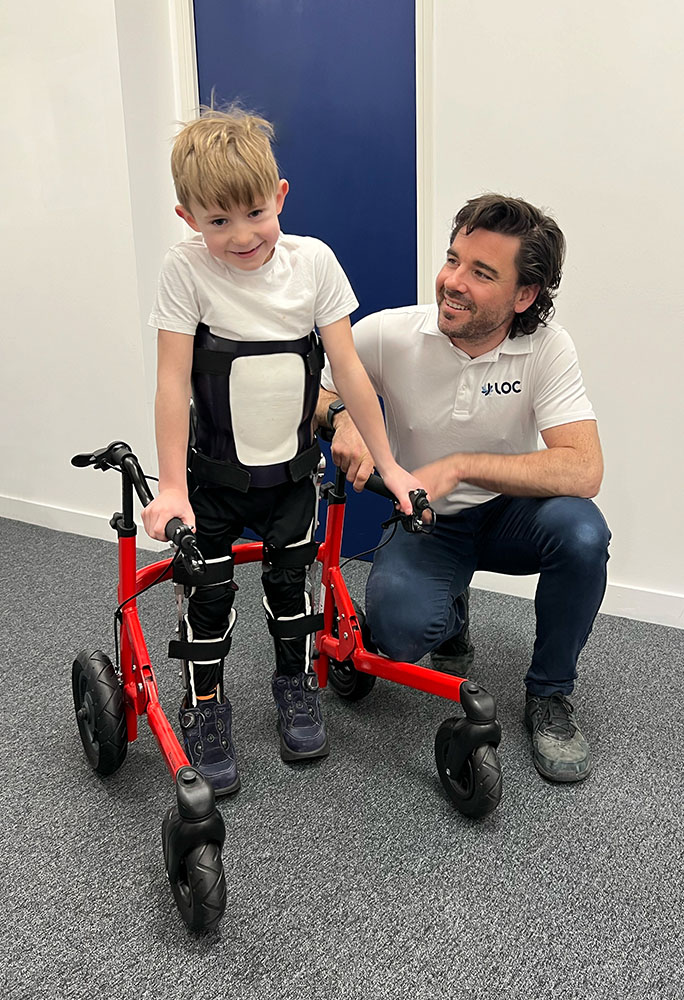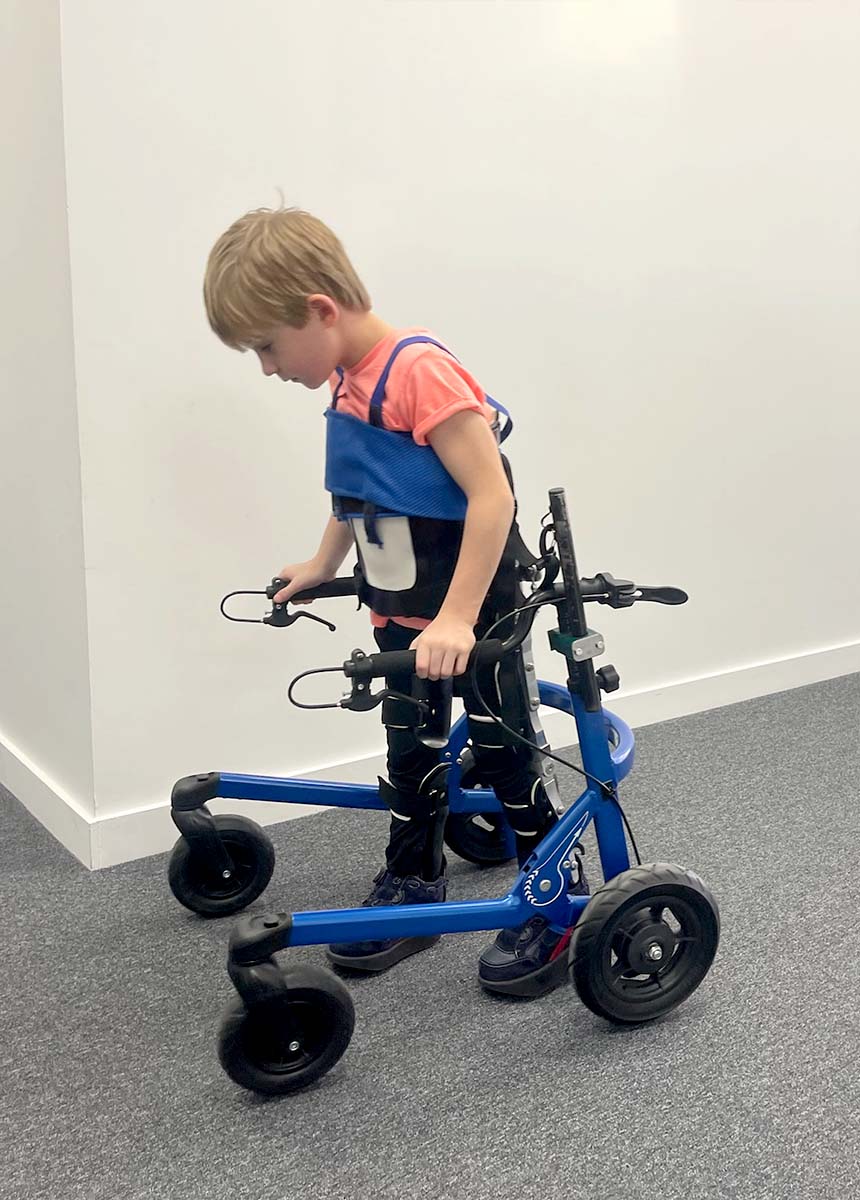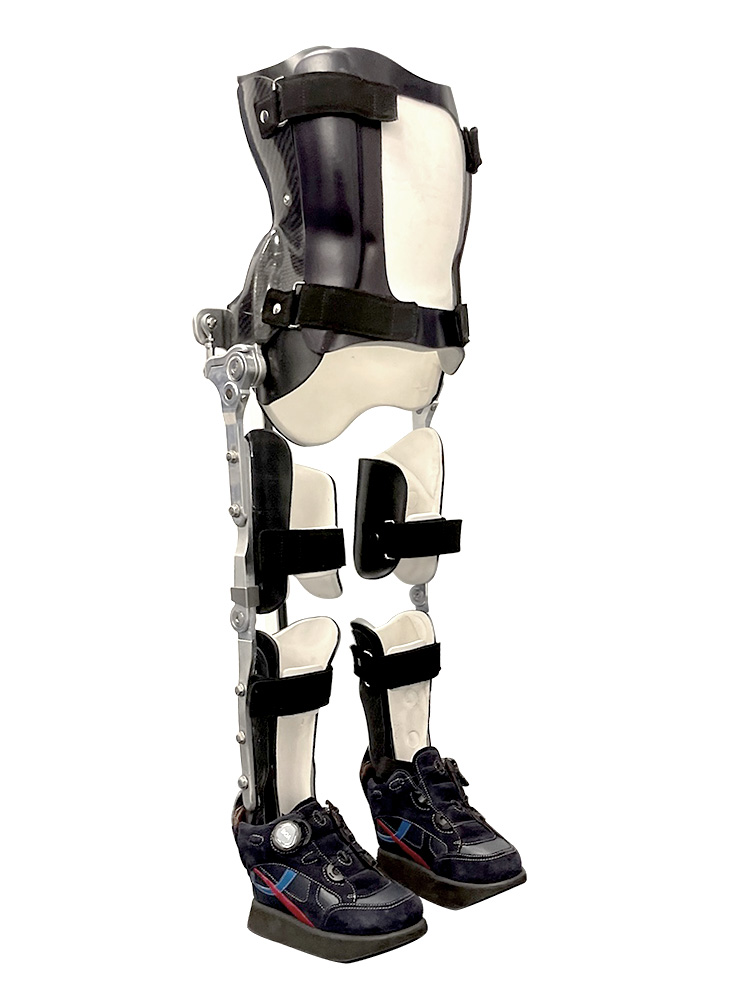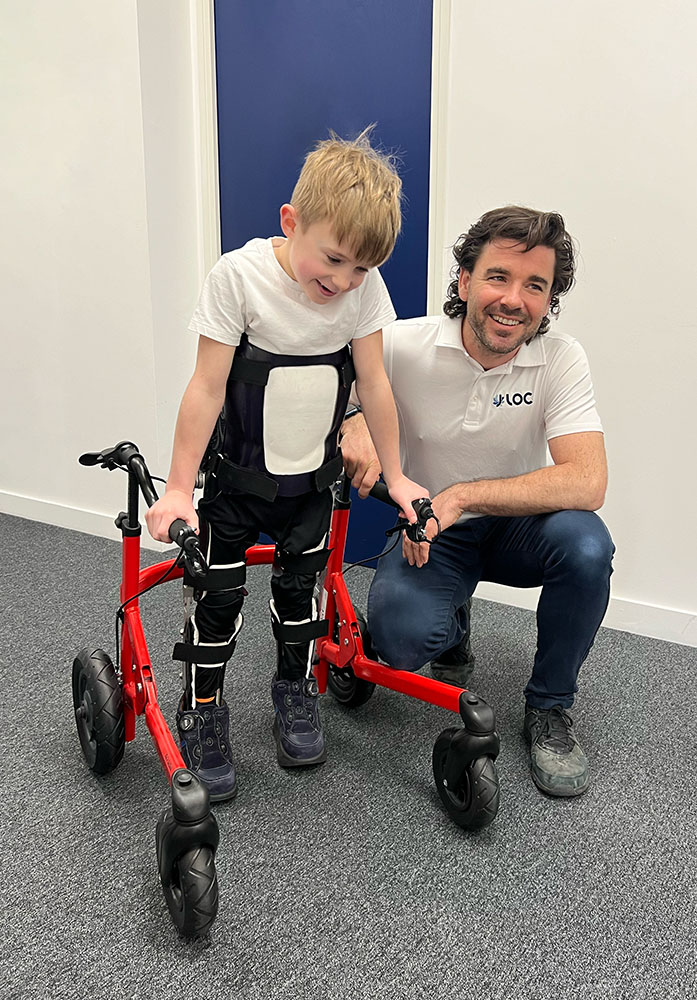
Ted stands in his custom Reciprocating Gait Orthosis (RGO) with his walker, next to director Sam Walmsley who made it for him
19 April 2024
He was left with an ongoing spinal injury due to the compression of his spinal cord. On discharge, he was provided with a full set orthosis: a very old-fashioned orthosis with a plastic posterior spinal section, a fabric front section, and conventional-style steel callipers attached to hip and knee joints. It is heavy and only allows the patient to stand. Over the next couple of years, Ted's mother Joanne became progressively concerned that his rehabilitation was regressing rather than progressing and started to look around for help: "He had been able to stand in his orthotics for seven hours, but by this stage, he could only manage half an hour."
By chance, the lady who took Ted for hydrotherapy sessions knew about LOC because we had helped a previous patient and strongly recommended that Joanne contact us for help.
Ted was assessed in The London Orthotic Consultancy’s Gait Laboratory on 24 March 2023 by Sam Walmsley, Director and lead clinician. Ted was accompanied by his parents and his physiotherapists, Laura and Emma. In discussing the treatment goals with them, it was clear that they had significant concerns about the alignment of the full set and felt that improvements to Ted's standing could be achieved in terms of his posture and alignment that would give Ted more functional ability through his core and upper limbs.
Joanne recalls: "We really wanted a much lighter weight standing orthosis, and something that's easier to put on/take off and user friendly."

Ted getting used to walking in his Reciprocating Gait Orthosis during an early fitting

Ted's bespoke Reciprocating Gait Orthosis
Sam's assessment revealed a number of problems with Ted's existing orthotic prescription. In addition to the sheer weight of the full set orthosis, the pair of Ankle Foot Orthoses (AFOs) had not been aligned correctly to facilitate a normal standing position and the full set utilised standard footwear and, therefore, did not control Ted's foot biomechanics at all. The good news was that Ted had good upper body strength, a strong core and good hip flexion, but there was a limit to the amount of hip extension he could manage.
While minor alignment problems within AFOs may seem trivial, for long-term AFO users, they can cause soft tissue and structural deformity to occur. Spinal injury patients (as with many other patient groups) have potential for rehabilitation, and as technology improves, who knows what that potential may be. Therefore, maintaining good alignment and range of movement of the foot and ankle to prevent bony deformity should be a basic requirement of any clinical and therapeutic team. AFOs play a huge part in this, which is why small alignment changes can have substantial long-term benefits.

LOC's recommended prescription involved a Reciprocating Gait Orthosis (RGO), Fixed Ankle AFOs and specialised footwear plus a hip flexion contracture device. An RGO is a type of orthopaedic device used to aid individuals with mobility impairments, particularly those with lower limb weaknesses or paralysis. The primary purpose of an RGO is to assist in walking by providing support and helping users achieve a reciprocal gait pattern. For patients with significant glute weakness, the RGO offers an opportunity to be upright and walk with a swing phase element for each leg.
It allows for a reciprocating gait, meaning that as one leg moves forward, the other leg simultaneously moves backwards. This has huge therapeutic benefits for this patient group. Not only are RGOs more functional, allowing standing and stepping but they also help to foster a greater range of movement in the hips and knees as a child grows.
Ted was fitted with his RGO in April of last year. Mum Joanne commented: "He's really doing well with it and can now stand for considerable lengths of time; he can also walk in it with the help of his walking frame. The videos say it all really. Sam has been great with Ted. In contrast to every other health professional we have ever seen, Sam talks direct to Ted, involves him, explains what he is doing and why. We know we are in it for the long haul, but we also know we are in good hands."
Sam concludes "RGOs are complex but their impact can be transformational. Treating Ted is humbling. His determination and zest for life in combination with the right orthotics and therapy has made his progress a delight to watch. Watching him race his grandmother in his RGO is one of my favourite patient memories."
If you are a parent, patient or case manager and would like to discuss these complex orthoses, please contact one of our clinical team.